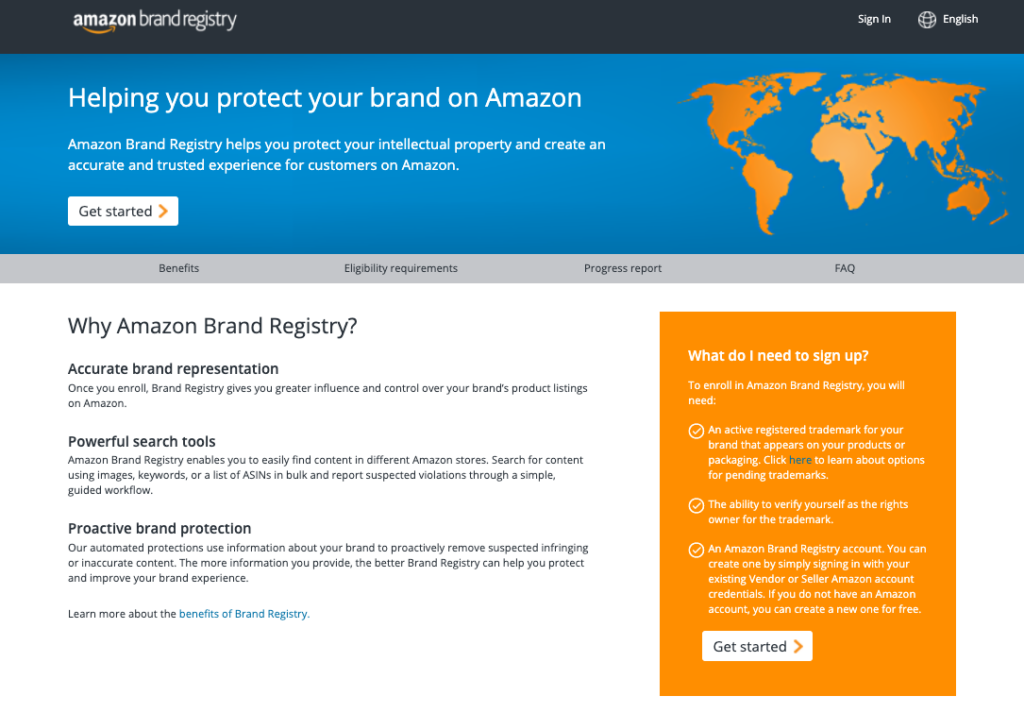There are a plethora of challenges that are rarely talked about when you start the process of creating your very own Amazon business. Sure, there are hundreds of articles guiding you through Seller Central, Amazon’s specific guidelines, and ways to make profits. Starter tasks, however, oftentimes get forgotten about or swept under the rug.
Choosing which wholesale product to sell is one of these requirements that does not get enough attention. When it comes down to it, though, this choice is one of the essential steps for any successful business.
With over 4,000 items being sold on Amazon per minute, each and every seller must make the call on what product will make an impact on buyers––yes, each of the 2.5 million sellers on Amazon, including you, should take this step extremely seriously.
In this article, we will guide you through the process of choosing which wholesale products to sell on Amazon. Though we cannot explicitly tell you which products will be the most profitable, we will help you through your research process and provide a few insider tips and tricks. By the end, you’ll be bursting with ideas to research.
Determine your Amazon Business Model
Before you get into deciding the individual products to sell, you need to have a basic understanding of what you are hoping your Amazon business model will be. When it comes down to it, there are two ways to sell wholesale products on Amazon: the private label model and the reseller model (also known as the white label).
Your business model plays a vital role in everything your business does, from working with suppliers to choosing products. Therefore, while both private and resale are viable options to make an income on Amazon, it is essential to choose the right path for you.
Private Label Model
The process of selling as a private label includes purchasing generic products wholesale and then repackage in your own branding. It is a good way to get your foot in the heavy Amazon door. Therefore, if you are looking to build your own business and brand loyalty while selling a niche product, chances are you will pursue a private label model.
The private label model has many other benefits as well, including being easily customizable and scalable.
There are a handful of challenges that come with private label model selling. Unfortunately, it is not all sunshine and rainbows. The most common challenge private sellers will face happens when interacting with suppliers. Since Amazon partners with businesspeople across the globe, communication and cultural differences can lead to catastrophic relationships.
On top of this, private label selling requires more guesswork and behind-the-scenes review building. Since you are not directly creating these products, it is also likely that there may be a lack of demand over time. Of course, this won’t be an issue if you can find a niche product. However, with Amazon owning 5.1% of the total US retail market, this can be quite difficult.
If done correctly, though, all of these challenges can lead to an extremely profitable product. The most common private label product types include:
- Personal Care
- Cleaning Products
- Beverages
Note: There is no need to worry about intellectual property infringements even though you are technically selling a product that is not your own creation. However, it is always a good idea to triple-check with suppliers and freshen up on Amazon guidelines.
Reseller Model
As the name suggests, the reselling model includes buying products and then “re-selling” them. As an Amazon wholesaler, you will typically buy products at a lower price from a distributor and sell them on your Amazon store. The most profitable resellers have a flourishing relationship with their exclusive brand––which entails an increase in the amount of time and effort put into the communication between parties.
This model works best for individuals with smaller businesses who are looking for short-term profit. Since the market is driven by low prices, it is essential to choose a product that can maintain a reduced price and return profits. Another important element of reselling is the Buy Box. If you are looking to resell products on Amazon, you will need to become an expert about Buy Box optimization.
Just like with the private label model, there are plenty of things to be wary about when reselling. Because you are selling at a lower price, you will likely make a smaller profit margin. You may also have problems with quality control, including expiration issues, broken items, or missing parts––meaning low product reviews. As we are all aware, these reviews are the lifeblood of Amazon. In fact, product reviews affect the decisions of 93% of consumers. Therefore, reselling is a riskier game and can potentially result in fewer returns. However, you will be making a passive income and have the potential to scale your business astronomically.
At the end of the day, you truly can resale anything you desire. As long as you can take care of your own inventory (Amazon recommends using Filled by Amazon) and never claim the product as your own creation, you are good to go! Of course, there are some products that are more profitable than others. The most popular items bought by resellers include:
- Clothing
- Pet Supplies
- Car Accessories
Note: Yes, it is completely legal to sell products you have bought at a lower price. Once you have purchased a product, it is yours to do whatever you please with it. Since you are reselling it, however, you cannot list the item as brand new, even if it has never been opened. Instead, opt for Used/Very good condition. Each site has its own regulations regarding reselling; make sure you are following the correct guidelines to avoid any legal trouble!
Do Your Research
Now that you have a clear idea of the types of wholesale business models you can choose from, it is time to research your specific Amazon product. Whether you are selling technology, clothing, pet supplies, or an assortment of products, there are a few integral questions to ask yourself before choosing: is there a demand, what is the competition, and can you make a profit.
By asking yourself these questions and doing thorough research to find the answer, you can avoid making the mistakes hundreds of Amazon sellers make when they first start out. Now, let’s dive into how to do the proper research for each question.
Is there a Demand?
First and foremost, are there people out there who want to buy your product? Is there a market for what you want to sell? Is this demand sustainable, or is this only a temporary want? At the end of the day, the best product you can list on Amazon is one that will fly off the shelves.
A good indicator of this is if it fits into Amazon’s bestselling categories. These include Electronics, Clothing, Shoes and Accessories, Toys and Games, Books, and Jewelry. This is obviously a very wide array of products; so, to go a step further, you will want to do some keyword research.
We recommend using Jungle Scout to assess how popular your product is on Amazon. The ideal keyword has low competition but trigger product ads on Google. You can also examine current Amazon bestselling products. By taking note of what sells the best on the platform, you can gain insight into what products consumers want and how they want their information presented.
We know that doing this research by hand can be tedious and time-consuming. Fortunately, there are a handful of tools available to make this process easier for you. Our favorites include Unicorn Smasher, Helium 10, and AMZScout.
What’s the Competition?
In addition to looking at the available market, you will want to look at what companies are already filling customer demand. It can be extremely difficult to turn a profit in markets that are already extremely saturated. On the other hand, if there is no competition, there is likely also not a huge market. Therefore, striking this balance is key for a successful Amazon product.
Ideally, you will want to enter into a market that is filled with other small businesses like yours. This way, you can undercut your competitors with your (hopefully) high reviews and exceptional products. Another way to bypass the competition is to find a significant gap in the market. Take a close look at what color, style, or type of product is missing from your desired niche. You might also find an area that is largely unsatisfied with what is being offered. This is the perfect area for you to jump in.
To quickly analyze the competition, we recommend using SEMScoop or Jungle Scout. Both of these options can seem relatively pricey for those of you who are just starting out in the selling world; however, the right research tools can go a long way.
Can you make a Profit?
Last but not least, you need to look at what type of profit margin that is available with your desired product. This is especially important if you are using the reseller model. It is vital to find items that you can buy wholesale for a cheaper price than what you will list on Amazon––and don’t forget all those extra costs (shopping, inventory management, taxes)!
While this is one of the most important aspects of a successful Amazon product, it can also put you on a trail of misfortune. Make sure you do not get wrapped up in a race to the bottom. While lower prices might turn more conversions, it is not always the best pricing strategy.
One way to avoid this is by choosing products that are smaller. This frees up more space in inventory and is typically easier to ship. Therefore, you can keep product prices relatively low and save money on outside fees, resulting in an overall profit.
You can get a good sense of what extra costs you will by paying by looking through Amazon’s FBA fee schedule. Jungle Scout can also assist with this confusing process. Ultimately, you will want to plan to spend more money on selling products on Amazon than you initially expect. At the end of the day, though, you’ve got to spend money to make money!
Insider Tips and Tricks
Before you head off and do your research on your products, take a few more moments to listen to what we have learned about how to choose your product on Amazon. These tips are especially useful for those just hopping into the Amazon game.
Make it Simple
It is worth stating the obvious that your first Amazon product should be one that is not too complex. Choosing a simple product will make it easier to communicate with suppliers and ensure quality after shipping. Therefore, avoid products that are easy to break, heavy, or licensed.
Trust Logic
When it comes to selling on Amazon, logic always wins. If you are someone who likes to trust their guy, this may be a big change for you. However, when dealing with potential scammers and greedy business people, you will always want to go with the facts and figures. It is time to put passion aside and make some money.
Make it Year-Round
Try to avoid products that are only popular during a specific time of the year. While shorts with flags on them and rainbow popsicles may be the desirable item of your town at the moment, or though you may have a deep love for Christmas Lights or spooky pumpkins, these items will go through a dry spell 70% of the year.
A good way to avoid this is by checking the search volume on Google. If there is one high spike and the rest is minimal, it is best practice to avoid the product altogether.
Final Thoughts
So there you have it–all there is to know about choosing a wholesale product on Amazon. We know that this is not always the easiest choice to make; however, by following these guidelines and getting that research done, you’ll be making a profit in no time.
And remember, you always have us at Anata to help you out.















